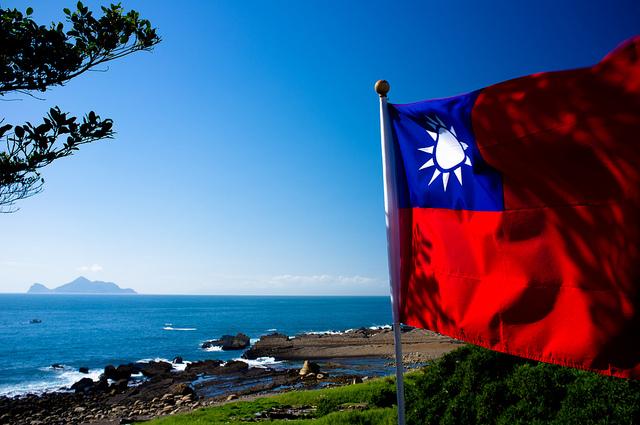Tsai Ing-wen and Taiwan’s stake in the South China Sea
Posted By Sheryn Lee on May 23, 2016 @ 14:30

Taiwan’s new government already faces two major foreign policy challenges. The first is China’s disappointment [1] over President Tsai Ing-wen’s inauguration speech last week. The second—which has hardly been mentioned in the strategic debate—is Taipei’s position on the upcoming ruling of the Permanent Court of Arbitration [2] (PCA) in the Philippines versus China case.
In April 2016, the government-linked Chinese (Taiwan) Society of International Law submitted [3] evidence to the PCA, arguing that Itu Aba (Taiping), located in the Spratly Islands chain, is an island with the right to an Exclusive Economic Zone (EEZ) and that it belongs to Taiwan. Two days before Tsai’s inauguration last week, Taiwan’s Ministry of Foreign Affairs warned [4] that the Taiwanese government wouldn’t accept the PCA ruling unless the five PCA arbitrators and the Philippines’ representatives visit Itu Aba. Yet despite Taiwan’s vested interest in the matter, its intervention in the arbitration could have an adverse effect on its strategic and political interests.
Itu Aba is the largest feature in the Spratlys. Taiwan has occupied the island since 1945 when it became terra nullius after Japan renounced its claims in the Treaty of San Francisco [5] and the Treaty of Taipei [6]. Taipei’s claim dates back to 1947 when it published its U-dash line [7], strikingly similar to China’s infamous nine-dash line [8] covering almost the entire South China Sea.
The PCA will rule on two issues: first, it will decide which features in the Spratlys are a low-tide elevation (LTE), a rock or an island. That has implications for the range of nautical miles of territorial waters granted around the features—EEZs can claim 200nm of territorial waters, rocks can claim 12nm, and LTEs can claim neither. Second, it will reach a verdict on the validity of the claims of China’s nine-dash line—that is, determining whether claims within a country’s EEZ are enforceable. The court, in line with the United Nations Convention on Law of the Sea, doesn’t have any jurisdiction over sovereignty.
Arguably, Taiwan has the strongest claim to an EEZ within the disputed area. Taiping Island is dry land with ‘a weak water lens’ [9]—meaning it has fresh water, and therefore potential for agriculture and permanent residency. Added to Taiwan’s continuous presence, it’s therefore the only feature in the Spratly island chain likely to be ruled an island and granted an EEZ. Taiping’s EEZ could also include an additional 150nm under Article 7 of UNCLOS, due to the rights of the coastal state over the continental shelf. Currently, Taiping is also home to one of only two airstrips in the area long enough to accommodate larger aircraft. As I [10] have previously written on The Strategist, Taiwan has increased military and economic investments on Taiping. This month it also completed a US$100 million port upgra [11]de and the installation of a new lighthouse [12].
There are two key reasons Taiwan maintains an interest in Taiping: first, the geostrategic location supports its maritime awareness in the South China Sea. In the future, Taiping could serve as a base for Taiwan’s upgraded P-3C Orion maritime patrol aircraft. Second, the island is critical to Taiwan’s assertions as a sovereign state. Taiwan’s de facto sovereignty is under increasing pressure [13] from Beijing. Relinquishing its claim over Taiping would be a blow to Taiwan’s national pride, erode its informal independent status and undermine its sense of security. Indeed, in her inauguration speech, Tsai stated [14] that it was her ‘responsibility to safeguard the sovereignty and territory of the Republic of China’.
However, Taiwan’s claim in the South China Sea is a double-edged sword. Despite China challenging the PCA’s jurisdiction and the Philippines’ right to bring the case to court, China has backed Taiwan’s submission. The reasons are obvious: Taipei’s challenge to the Philippines implicitly supports Beijing’s claims, and should China one day wrestle back control over Taiwan, Taiping and its EEZ would fall under Beijing’s jurisdiction. China’s control of its ‘near seas’ [15] would also complicate the ability of the US Navy to operate in the South China Sea.
Although Taiwan’s political leadership has made it clear that its claim over Taiping is incompatible with that of China, its submission to the PCA could paradoxically benefit China and damage the new government’s goal of increased engagement with ASEAN through its ‘New Southbound policy’ [4]. Moreover, while Taipei shouldn’t relinquish Taiping, a PCA ruling in favor of the Philippines would strengthen the regional rules-based order underpinned by Washington and its allies. Taiwan’s submission threatens to undermine that result. Consequently, Washington’s de facto embassy in Taipei called [16] former President Ma Ying-jeou’s January 2016 visit to Taiping ‘extremely unhelpful’. The PCA process will also pressure Taiwan to legally interpret [17] its own claim over Taiping, and thus its U-dash line, which would implicitly support China’s own nine-dash line due to the historical contest over Taiwan’s independence. At the end of the day Taiwan might have best secured its interests in maritime Asia by keeping quiet.
Article printed from The Strategist: https://aspistrategist.ru
URL to article: /tsai-ing-wen-taiwans-stake-south-china-sea/
URLs in this post:
[1] disappointment: http://www.chinadaily.com.cn/china/2016-05/21/content_25397912.htm
[2] Permanent Court of Arbitration: https://www.pcacases.com/web/view/7
[3] submitted: http://www.reuters.com/article/us-southchinasea-taiwan-idUSKCN0Y02LD
[4] warned: http://www.manilatimes.net/taiwan-to-reject-tribunals-ruling/262803/
[5] Treaty of San Francisco: http://www.taiwandocuments.org/sanfrancisco01.htm
[6] Treaty of Taipei: http://www.taiwandocuments.org/taipei01.htm
[7] U-dash line: http://www.economist.com/news/asia/21621844-south-china-seas-littoral-states-will-fight-museums-archives-and
[8] nine-dash line: https://aspistrategist.ru/chinas-new-map-just-another-dash/
[9] a weak water lens’: http://portal.unesco.org/en/ev.php-URL_ID=13604&URL_DO=DO_TOPIC&URL_SECTION=201.html
[10] I: https://aspistrategist.ru/chinas-10-dash-line-and-cross-strait-tensions/
[11] US$100 million port upgra: http://www.reuters.com/article/us-taiwan-southchinasea-idUSKCN0V600J
[12] new lighthouse: http://taiwantoday.tw/ct.asp?xItem=240098&ctNode=2175
[13] under increasing pressure: http://www.brookings.edu/blogs/order-from-chaos/posts/2016/03/17-xi-jinping-speech-taiwan-bush
[14] stated: http://focustaiwan.tw/news/aipl/201605200008.aspx
[15] ‘near seas’: http://nationalinterest.org/article/chinas-near-seas-challenges-9645
[16] called: http://www.reuters.com/article/us-taiwan-southchinasea-idUSKCN0V502V
[17] legally interpret: http://amti.csis.org/taiwan-implicitly-clarified-u-shaped-line/
Click here to print.